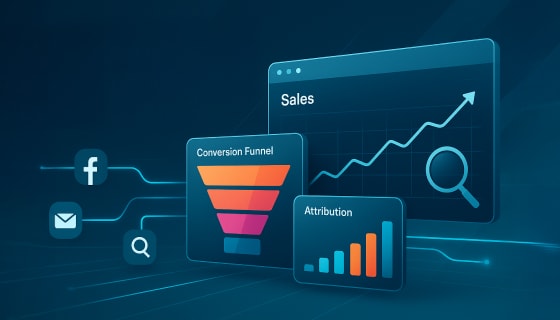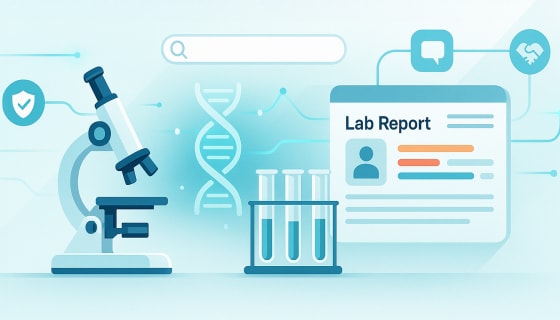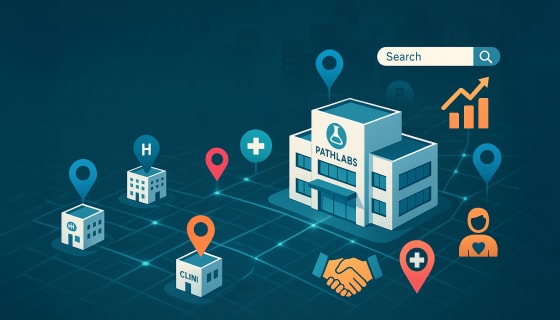Joint replacement surgeons are no strangers to precision, and your marketing should reflect this same level of attention to detail. With AI marketing tools becoming more accessible, it’s now possible to match the accuracy you deliver in surgery with how you attract and communicate with patients.
Today’s patients expect more than just a listing on Google. They want instant answers, trusted information, and a smooth experience—from their first search to booking a consultation. AI tools can help you deliver that without adding to your already busy schedule.
Consider this blog an AI marketing guide for orthopedic surgeons seeking practical, no-nonsense advice on leveraging AI to streamline and enhance their marketing efforts. You’ll learn how to choose the right tools, set them up the smart way, and measure impact within your first 30 days—so your practice can grow without growing more complicated.
Why AI Marketing Matters in Joint Replacement
Joint replacement patients research their options, considering it a significant life decision because it affects them. Every click, query, and review they engage with leaves behind a data trail, and this behavior has completely reshaped how orthopedic practices need to approach marketing. They want convenience, credibility, and clarity—on their terms and in real time.
This is where AI marketing bridges the growing gap between awareness and action. Instead of waiting for patients to call or fill out a form, AI-powered systems step in proactively. Intelligent chatbots engage visitors the moment they land on your site. AI-driven ads enable precise targeting of the right demographics. Automated CRMs send timely follow-ups and booking reminders, ensuring no interested leads slip away.
Some of the most significant pain points that AI marketing strategies can quietly and effectively solve include:
- Missed or delayed follow-ups when patients show interest
- Generic messaging that fails to connect with specific needs
- A lack of visibility into campaign performance and lead behavior
- Lost leads due to manual delays or disconnected systems
- Time-consuming processes that could be easily automated
By leveraging AI marketing strategies to optimize the journey from the first click to consultation, joint replacement practices can enhance not only their visibility but also their conversion rates, patient experience, and overall marketing effectiveness.
And while AI offers clear advantages, it’s worth taking a step back to understand how it truly compares to traditional marketing approaches still employed by many practices.
AI vs. Traditional Marketing for Orthopedic Surgeons
For years, traditional marketing has been the go-to approach for most orthopedic practices—and for good reason. Print ads in local newspapers, brochures in clinic waiting rooms, outdoor billboards, and even the occasional radio spot have helped surgeons build visibility in their communities. These strategies have created familiarity and trust over time, forming the backbone of patient outreach for decades.
But while traditional marketing still has its place, it often lacks the flexibility and feedback loop needed to compete in a digital-first world.
Powered by machine learning, AI marketing introduces a new level of responsiveness and relevance. AI marketing strategies enable you to analyze vast amounts of patient data, identify behavioral patterns, and automate critical tasks, such as patient outreach, ad optimization, and follow-ups. Rather than sending generic messages to a broad audience, it enables personalization at scale, tailoring messaging to each stage of the patient journey. It understands what patients are searching for, when they’re most likely to engage, and how to guide them toward booking a consultation, without any manual effort.
Here’s a quick look at how AI and traditional marketing compare across key decision-making areas:
| Aspect | Traditional Marketing | AI Marketing |
| Cost-Effectiveness & ROI | High upfront investment with limited tracking | Budget-friendly scaling with measurable performance |
| Real-Time Decision Making | Static, once launched, is hard to pivot | Adjusts instantly based on data and user behavior |
| Targeting High-Intent Patients | Broad messaging based on demographics | Precision targeting based on search behavior and engagement |
AI isn’t here to replace what works—it’s here to refine it. And it all begins with choosing the right tools for your practice.
Choosing the Right AI Tools for Your Practice
Not every tool with an “AI” label will make sense for your practice—and that’s okay. The key is to start with tools that solve real bottlenecks in your patient journey, not ones that just sound impressive on paper. For orthopedic practices, the goal is to automate responding to patient queries more quickly, maintain consistent follow-ups, or target the right audience more effectively.
A thoughtful approach—often rooted in a well-structured AI marketing guide—can help you identify tools that align with your goals and practice needs. Below are three tools that are often recommended as part of foundational AI marketing strategies:
- Patient Chatbots to Handle First-Line Queries: Chatbots are often the first step for a smart AI marketing approach. These tools now function like a 24/7 front desk, answering common questions, guiding users through pre-surgery information, and helping patients take the next step. And they’re not just trendy. The healthcare chatbot market is projected to reach USD 4,355.6 million by 2030, growing at a CAGR of 24% from 2025 to 2030, with more than one-third of users already relying on them for instant medical answers.
- CRM Systems That Learn and Adapt: CRM systems go far beyond storing contact info. They utilize AI marketing strategies to analyze patient interactions, segment leads based on behavior, and trigger automated, personalized follow-ups, which dramatically improve response rates. The ROI speaks for itself: for every $1 spent on CRM, practices can see a return of up to $8.71 while saving hours of administrative time every week.
- Automated Ads That React to User Behavior: Running ads manually can be hit or miss, but AI-powered ad platforms adapt in real-time. If a patient visits your website but doesn’t book, the system can automatically display a tailored ad that addresses their specific concern. This type of behavioral targeting is what drives higher conversions, with studies showing that personalized ads significantly improve engagement and repeat visits compared to one-size-fits-all campaigns.
Whether you start with one of these tools or explore all three over time, the key is to focus on what solves real problems in your current setup. And when it comes to reaching the right patients at the right time, few tools deliver faster results than AI-powered advertising.
Running AI-Powered Ads for Joint Replacement Services
When time and budget are limited, ads need to work smarter, not harder. AI-powered advertising enables joint replacement clinics to target and deliver ads that reach the right patients.
One of the most significant areas where this is evident is in Google Ads. Platforms like Google’s Performance Max and Meta Ads Manager now use machine learning to optimize everything from bidding to audience targeting. With AI built into these systems, your campaigns can analyze real-time search trends, test different versions of your ad copy, and automatically shift your budget toward the highest-performing placements. With smart bidding, you can ensure that you’re only spending on clicks that demonstrate genuine intent, helping to stretch your budget further without compromising reach.
But search ads are only part of the equation.
AI is also changing how we approach social media advertising, particularly through predictive targeting. Platforms like Facebook, Instagram, and LinkedIn use AI to understand user behavior beyond basic demographics. They analyze scroll patterns, content interactions, location history, and even time-of-day behavior to serve ads to users who are likely thinking about joint-related care, even if they haven’t searched for it directly yet.
This opens up powerful options like:
- Geo-targeting in healthcare enables you to reach potential patients within a specific radius of your clinic, making it ideal for practices serving a defined local area.
- Local search intent modeling, where the AI identifies patterns of people likely to be researching orthopedic care in your area, even if they’re not explicitly searching right now.
By combining search-driven AI advertising with predictive, behavior-based social ads, you build a presence that’s both proactive and precise. However, for these AI marketing strategies to truly deliver, they must be connected to your website and CRM, allowing every click to become a trackable and actionable part of the patient journey.
Connecting AI Tools to Your Website and CRM
Most orthopedic practices already utilize a CRM system in some form, whether to manage patient contacts, schedule appointments, or send follow-up reminders. However, the real value lies in its full integration with your marketing efforts, website, and AI tools, ensuring that everything works together seamlessly, not in silos.
By connecting your website, CRM, and advertising platforms, AI marketing strategies can track each patient’s journey from their initial interaction to their appointment and subsequent follow-up. This creates a connected system that responds faster, nurtures smarter, and eliminates the manual effort that typically slows down the process.
Here are three key areas where AI-powered marketing delivers the most value when integrated into your website and CRM:
- Booking System Automation: AI-enabled booking tools can sync directly with your calendar and website, enabling patients to schedule appointments in real-time. These systems can factor in availability and appointment types and even send automated confirmations or reminders, freeing your team from the constant back-and-forth.
- Smart Lead Capture and Qualification: Instead of treating all website visitors the same, AI tools can identify high-intent users based on their behavior, like which pages they visit or how long they stay. The system can then trigger personalized responses, such as offering a consultation slot or sending them more relevant info via email, increasing the chance of conversion.
- Data Sync Between Platforms: When AI tools are connected, data flows seamlessly between your ad accounts, website, and CRM. This means your CRM knows where each lead originated, which campaign was effective, and what content they engaged with. It not only sharpens your future campaigns but also ensures a smoother handoff to your internal team.
When all these elements work together, your practice runs more efficiently, your marketing becomes sharper, and your patients receive a seamless, consistent experience. Now it’s time to track what’s actually driving those results.
Measuring Results in the First 30 Days
The first 30 days after launching your AI-powered marketing system are all about insights. To make sense of those early results, it’s essential to focus on a few key metrics that matter most in the orthopedic context.
These insights lay the foundation for refining your approach and building out long-term AI marketing strategies that scale effectively.
Conversion Metrics to Track
At its core, marketing is about movement—turning curiosity into consultation. Conversion metrics with web analytics help you measure that shift. They show whether your messaging, targeting, and automation are working together to drive patients toward booking.
- Booking Rate: This is the percentage of users who land on your site (or engage with an ad or chatbot) and ultimately schedule an appointment. If this number is low, your CTAs, landing page clarity, or booking flow might need adjustment. Orthopedic practices should aim for a booking rate of 3–5% from high-intent traffic as a strong benchmark for success.
- Cost Per Lead (CPL): This tells you how much you’re spending to generate one qualified inquiry. It’s calculated by dividing your ad spend by the number of valid leads generated. A high CPL may indicate that you’re targeting too broadly or not effectively engaging warm audiences.
- Form & Chat Completion Rate: If people are reaching your forms or chatbots but not finishing, it’s a red flag. Perhaps the form is too lengthy, the chatbot isn’t intuitive, or patients are unsure of what happens next. The ideal aim should be for at least a 50–60% completion rate on simple forms and chatbot flows designed for consultation intent.
Engagement and Click Behavior Insights
Not every visitor will book immediately, but their behavior still reveals a lot. Engagement metrics help you understand how people interact with your website and content before making a decision.
- Are users spending time on your key service pages? If they’re bouncing within seconds, it’s time to revisit page design, content clarity, or loading speed.
- Which CTAs are performing? If one section of your homepage is getting more clicks than another, replicate that structure across the site. If a “Book Now” button is being ignored, test its placement, color, or language.
- Are visitors scrolling through your content or dropping off after a few lines? Scroll maps and heat maps can show how engaged they are.
Optimizing Campaigns with Early Learnings
The best part about AI marketing is that it doesn’t take months to start learning. Within the first 30 days, you’ll have enough data to start making small, smart pivots:
- Pause underperforming creatives: If an ad isn’t getting clicks or is resulting in poor-quality leads, don’t keep spending—pivot early.
- Double down on what’s working: If a specific keyword (“knee pain treatment”) or campaign format (carousel vs video) is performing well, increase the budget or expand variations.
- Adjust targeting based on behavior: AI tools allow you to re-target people who visited your site but didn’t book, helping you stay top-of-mind with minimal effort.
With the right metrics and early insights, your AI marketing strategies begin to operate with clarity and purpose. If you’re just getting started, following a structured AI marketing guide can help you prioritize the right tools, tactics, and optimizations, turning these early wins into long-term growth.
Conclusion
AI doesn’t require a massive leap—it just needs a thoughtful first step. Focus on one or two tools that align with your clinic’s immediate needs, and build from there. Whether it’s automating bookings, improving follow-ups, or simply showing up at the right time with the right message, small wins compound quickly. Ensure your team is aligned with the process, and let the data inform your next steps.
The future of patient engagement is already here—and it’s smarter, faster, and far more personalized than ever before. With ZealousWeb, book your complimentary 13-minute strategy session and receive expert guidance tailored to your specific practice needs.














